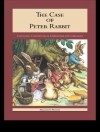This collection examines different aspects of attitudes towards disease and death in writing of the long eighteenth century. Taking three conditions as examples – ennui, sexual diseases and infectious diseases – as well as death itself, contributors explore the ways in which writing of the period placed them within a borderland between fashionability and unfashionability, relating them to current social fashions and trends.
These essays also look at ways in which diseases were fashioned into bearing cultural, moral, religious and even political meaning. Works of literature are used as evidence, but also medical writings, personal correspondence and diaries. Diseases or conditions subject to scrutiny include syphilis, male impotence, plague, smallpox and consumption. Death, finally, is looked at both in terms of writers constructing meanings within death and of the fashioning of posthumous reputation.
Innehållsförteckning
Introduction: Fashioning the Unfashionable; Allan Ingram and Leigh Wetherall Dickson.- PART I: ENNUI.- 1. ‘[F]ictitious [D]istress’ or Veritable Woe?: The Problem of Eighteenth-Century Ennui; Heather Meek.- 2. ‘What is fashionably termed ennui’: Maria Edgeworth Represents the Clinically Bored; Jane Taylor.- PART II: DISEASE OF SEXUALITY.- 3. Dean Swift on the Great Pox: or, The Satirist as Physician; Hermann J. Real.- 4. The à la Mode Disease: Syphilis and Temporality; Emily Cock.- 5. Of Fribblers and Fumblers: Fashioning Male Impotence in the Long Eighteenth Century; Kirsten Juhas.- PART III: INFECTIOUS DISEASES.- 6. Fashioning Unfashionable Plague: Daniel Defoe’s Journal of the Plague Year (1722); Hélène Dachez.- 7. How Small is Small? Small Pox, Large Presence; Allan Ingram.- 8. ‘Halfe Dead: and rotten at the Coare: my Lord!’: Fashionable and Unfashionable Consumption, from Early Modern to Enlightenment; Clark Lawlor.- PART IV: FASHIONING DEATH.- 9. Death by Inoculation: The Fashioning of Mortality in Eighteenth-Century Smallpox Pamphlets; Kelly Mc Guire.- 10. Fashion Victim: Suicide, Sociability and High Society in Georgiana Cavendish’s The Sylph; Leigh Wetherall Dickson.- 11. ‘Alas, poor Yorick!’: Jonathan Swift, Madness, and Fashionable Science; Helen Deutsch.- Bibliography.- Index.-
Om författaren
Allan Ingram is Emeritus Professor of English at the University of Northumbria, UK. He has published widely on eighteenth-century writing, with a particular interest in the relations between literature, medicine, and madness. His works in this field include The Madhouse of Language (1991) and Cultural Constructions of Madness (2005). Between 2006 and 2009 he was Director of the Leverhulme Trust project ‘Before Depression’, and was a Co-Director of the Leverhulme project, ‘Fashionable Diseases’, of which this volume is one outcome. He has edited Gulliver’s Travels (2012) and was co-editor of a four-volume set of source material, Depression and Melancholy 1660-1800 (2012). Most recently he co-edited a set of essays, Voice and Context in Eighteenth-Century Poetry (2015).
Leigh Wetherall Dickson is Senior Lecturer in eighteenth and nineteenth-century literature at Northumbria University, UK. She began her career there as a post-doctoral Research Associate on the Leverhulme-funded ‘Before Depression 1660-1800’ project. She has written and published extensively upon the experience of presumed mental disease, and was the co-general editor and volume editor for Depression and Melancholy 1600–1800 (2012). She is now one of the directors of ‘Fashionable Diseases: Medicine, Literature and Culture, ca. 1660–1832’, also funded by the Leverhulme Trust for three years. Her current research focusses upon the relationship between fashion, fame, and illness in the long eighteenth century, and is particularly interested in how the pursuit of fame was viewed as a type of contagious disease.












